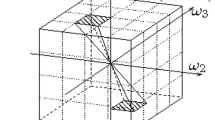Abstract
Structural brain imaging is a significant part of detecting the brain’s changes related to Alzheimer’s disease (AD). It harms the brain cells, and the earlier identification becomes the need to provide proper medication. Magnetic resonance imaging is widely applied to identify and analyze the disease’s growth, influencing the medication process. This view keeps designing the computer-aided diagnosis tool for distinguishing images with AD. This study develops an efficient automatic diagnosis model for brain MRI affected by AD. The presented model initially employs a discrete wavelet transform for feature extraction and then used principal component analysis for feature reduction. The kernel support vector machine with a whale optimization algorithm is applied for parameter optimization. An extensive simulation is executed to confirm the superiority level of the presented model. The experimental results say that the WOA-KSVM model is an appropriate diagnostic tool for screening AD.












Similar content being viewed by others
References
Magnin B, Mesrob L, Kinkingnehun S et al (2009) Support vector machine-based classification of Alzheimer’s disease from whole-brain anatomical MRI. Neuroradiology 51:73–83
Ram’ ırez J, Gorriz JM, Segovia F et al (2010) Computer-aided diagnosis system for the Alzheimer’s disease based on partial least squares and random forest SPECT image classification. Neurosci Lett 472:99–103
Salas-Gonzalez D, Gorriz JM, Ramrez J et al (2010) Computer-aided diagnosis of Alzheimer’s disease using support vector machines and classification trees. Phys Med Biol 55:2807–2817
Chincarini A, Bosco P, Calvini P et al (2011) Local MRI analysis approach in the diagnosis of early and prodromal Alzheimer’s disease. NeuroImage 58:469–480
Chandrasekaran G et al (2021) Test scheduling of system-on-chip using dragonfly and ant lion optimization algorithms. J Intell Fuzzy Syst 40(3):4905–4917. doi: https://doi.org/10.3233/JIFS-201691
Chandrasekaran G, Periyasamy S, Karthikeyan Panjappagounder R (2020) Minimization of test time in system on chip using artificial intelligence-based test scheduling techniques. Neural Comput Appl 32(9):5303–5312. doi: https://doi.org/10.1007/s00521-019-04039-6
Chandrasekaran G, Periyasamy S, Karthikeyan PR (2019) Test scheduling for system on chip using modified firefly and modified ABC algorithms. SN Appl Sci 9:1–12. https://doi.org/10.1007/s42452-019-1116-x
Chen G, Ward BD, **e C et al (2011) Classification of Alzheimer’s disease, mild cognitive impairment and normal cognitive status with large-scale network analysis based on resting-state functional MR imaging. Radiology 259:213–221
Grana M, Termenon M, Savio A et al (2011) Computer-aided diagnosis system for Alzheimer disease using brain diffusion tensor imaging features selected by Pearson’s correlation. Neurosci Lett 502:225–229
Wolz R, Julkunen V, Koikkalainen J et al (2011) Multi-method analysis of MRI images in early diagnostics of Alzheimer’s disease. Plos One 6:21–32
Zhang D, Wang Y, Zhou L, Yuan H, Shen D (2011) Multimodal classif Alzheimer’s disease mild cogn impairment. NeuroImage 55:856–867
Daliri MR (2012) Automated diagnosis of Alzheimer’s disease using the scale-invariant feature transforms in magnetic resonance images. J Med Syst 36:995–1000
Gray KR, Wolz R, Heckmann RA, Aljabar P, Hammers A, Rueckert D (2012) Multi-region analysis of longitudinal FDG-PET for the classification of Alzheimer’s disease. NeuroImage 60:221–229
Li Y, Wang Y, Wu G et al (2012) Discriminant analysis of longitudinal cortical thickness changes in Alzheimer’s disease using dynamic and network features. Neurobiol Aging 33:15–30
Lahmiri S, Boukadoum M (2013) Automatic detection of Alzheimer’s disease in brain magnetic resonance images using fractal features. In: 2013 6th International IEEE/EMBS Conference on Neural Engineering (NER) pp. 1505–1508
Stanley HE, Amaral LAN, Goldberger AL, Havlin S, Ivanov PC, Peng C-K (1999) Statistical physics and physiology: monofractal and multifractal approaches. Phys A 270:309–324
Di Matteo T (2007) Multi-scaling in finance. Quant Financ 7:21–36
Ramanathan S, Ramasundaram M (2021) Multilevel neuron model construction related to structural brain changes using hypergraph. In: Progress in Advanced Computing and Intelligent Engineering. Springer, Singapore, pp 204–212
Ramanathan S, Ramasundaram M (2020) Uncovering brain chaos with hypergraph-based framework. Int J Intell Syst Appl (IJISA) 12(4):37–47
Marcus DS, Wang TH, Parker J, Csernansky JG, Morris JC, Buckner RL (2007) Open access series of imaging studies (OASIS): cross-sectional MRI data in young, middle-aged, nondemented, and demented older adults. J Cogn Neurosci 19:1498–1507
Author information
Authors and Affiliations
Corresponding author
Additional information
Publisher’s Note
Springer Nature remains neutral with regard to jurisdictional claims in published maps and institutional affiliations.
Rights and permissions
Springer Nature or its licensor (e.g. a society or other partner) holds exclusive rights to this article under a publishing agreement with the author(s) or other rightsholder(s); author self-archiving of the accepted manuscript version of this article is solely governed by the terms of such publishing agreement and applicable law.
About this article
Cite this article
Ramanathan, S., Ramasundaram, M. Alzheimer’s Disease Shape Detection Model in Brain Magnetic Resonance Images Via Whale Optimization with Kernel Support Vector Machine. J. Electr. Eng. Technol. 18, 2287–2296 (2023). https://doi.org/10.1007/s42835-022-01317-7
Received:
Revised:
Accepted:
Published:
Issue Date:
DOI: https://doi.org/10.1007/s42835-022-01317-7




